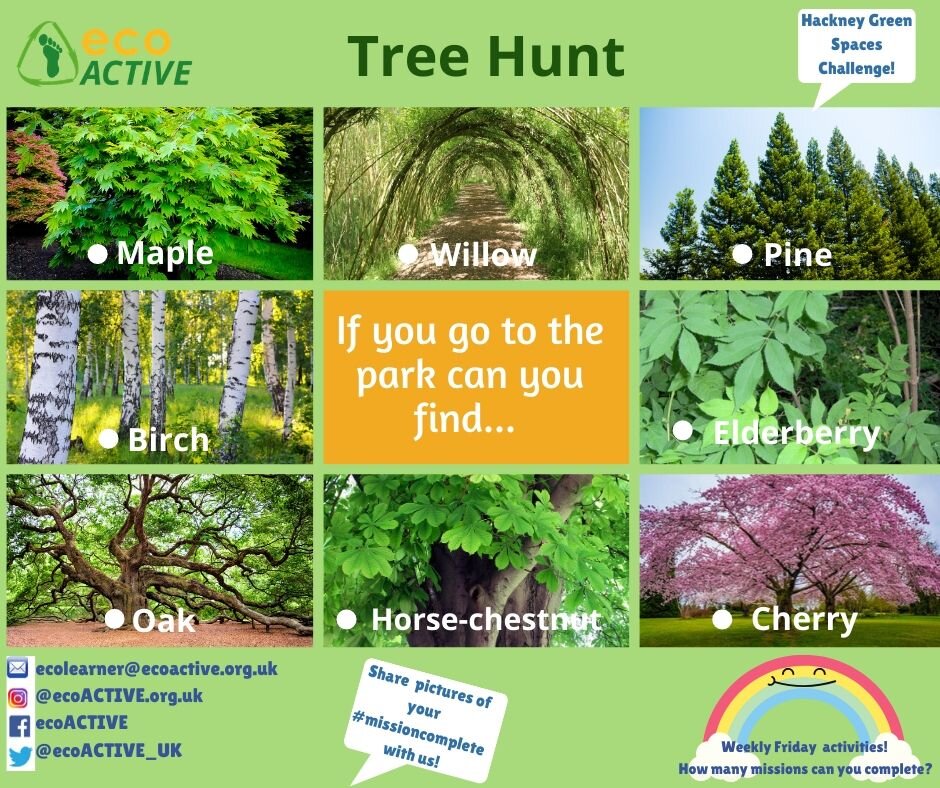
Nature hunts
Let’s go out and explore!
We love finding things, especially if it means we can root around outside and explore hidden places. We've made some great nature hunts for you to do, choose one and see what you can find! You might be surprised at what you find.
Shape Search
There are so many shapes around you if you just stop and look!
We've chosen some of our favourites for you to find. You might also spot lots of repeating patterns that nature likes to make. Let us know how you do, and bonus points if you can find a square! (We couldn't).
Wonderful weed hunt
A weed is what people call a plant they think is in the wrong place.
Some gardeners and farmers get rid of them, pulling them out (“weeding”), or applying weedkiller, but these plants are an important part of nature. Their flowers and leaves provide food for butterflies, bees, snails and worms. They can be pretty, too.
These tough plants can grow in parks, but also in pavements and walls. See if you can find any and email or tweet us a picture! (#ecoMissionComplete)
Sensory scavenger hunt
Our senses (sight, hearing, smell, taste and touch) can wake up when we are outside.
We love touching natural things and feeling the different textures under our fingers. Have you ever tried to feeling the bark of a tree? What was it like? Was it rough? Smooth? Bumpy?
You might not have a chance to go outside very much at the moment, so we have made a sensory Scavenger Hunt that works both at home and outdoors!
Share pictures of the things you found and touched via email or tweet (#ecomissioncomplete).
Bird spotting
See how many birds you can identify in your local area.
In towns and cities, birds can be found in gardens, parks and streets. They build nests in trees, bushes and other safe places. Lots of birds feed on seeds and invertebrates (some of the minibeasts you may have looked for last week). Flowers and plants provide food for the minibeasts, and the plants and minibeasts provide food for the birds. These things are connected - part of what we call an ecosystem. Lots of different plants, minibeasts and birds means the ecosystem is healthy. Some of these birds are not seen so much around anymore because the loss of habitat makes it hard for them to survive. It is important that we help preserve nature.
If you are quick enough to take a picture of the bird you see, please share it via email or twitter (#ecoMissionComplete).
Mini-beast hunt
Find out all about the mini-beasts that live around you.
Mini-beasts are ‘small creatures’, like worms, snails, insects and spiders. The scientific term for them is ‘invertebrates’ – a creature without a backbone. Did you know minibeasts make up 97% of all the creatures that exist on Earth?! That's a crazy lot!
Your challenge is to tick off as many of these mini-beasts in the picture as you can find. Remember you don't have to go outside to have a look for them, try having a look in a flower pot on a window sill, or open the windows and see what flies past. The more you look, the more you'll see.
We'd love it if you email or tweet us a picture of what you find (#ecoMissionComplete).
Tree hunt
Go exploring and see if you can spot all the different tree types.
There are many different types of tree. They grow to different sizes, have different flowers, colours and shapes of leaf, even different tree trunks. See what you can find on our worksheet, which you can download and print the poster below, or open on your phone.We'd love it if you email or tweet us a picture of what you find (#ecoMissionComplete).






